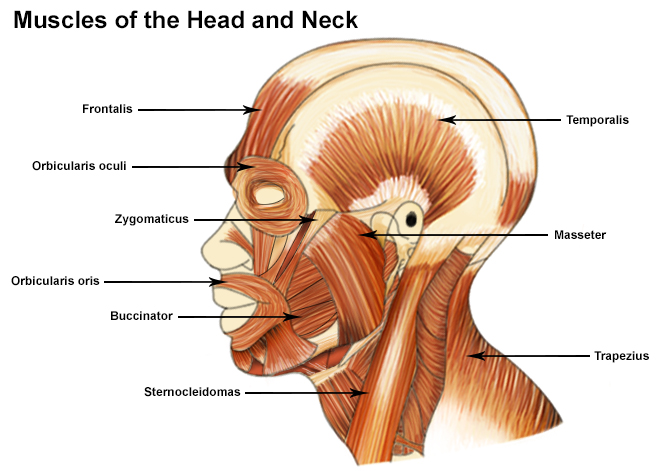Muscles of the Head and Neck
Humans have well-developed muscles in the face that permit a large variety of facial expressions. Because the muscles are used to show surprise, disgust, anger, fear, and other emotions, they are an important means of nonverbal communication. Muscles of facial expression include frontalis, orbicularis oris, laris oculi, buccinator, and zygomaticus.These muscles of facial expressions are identified in the illustration below.

There are four pairs of muscles that are responsible for chewing movements or mastication. All of these muscles connect to the mandible and they are some of the strongest muscles in the body. Two of the muscles, temporalis and masseter, are identified in the illustration above.
There are numerous muscles associated with the throat, the hyoid bone and the vertebral column; only two of the more obvious and superficial neck muscles are identified in the illustration: sternocleidomastoid and trapezius.
Suggested Citation
SEER Training Modules: Muscles of the Head and Neck. U.S. National Institutes of Health, National Cancer Institute. Cited 05 January 2026. Available from: https://training.seer.cancer.gov.




